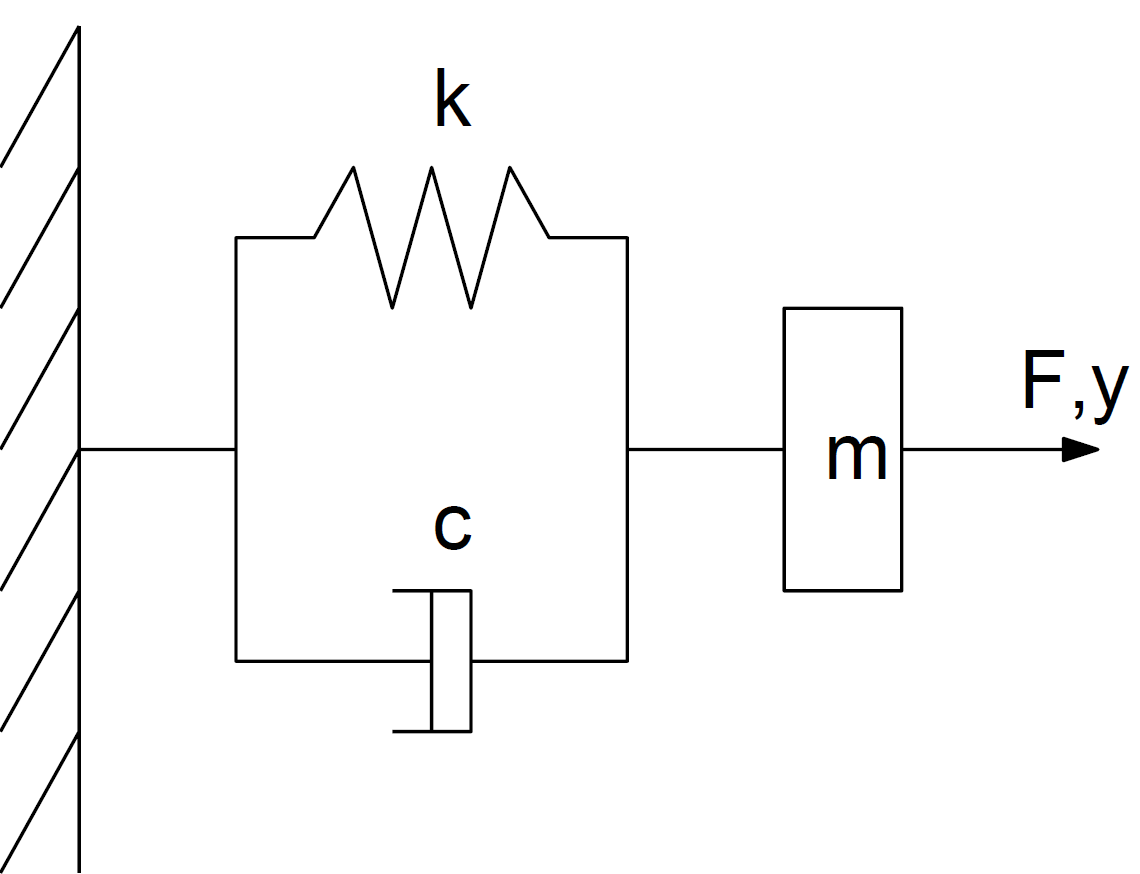
 PDF Index
PDF Index
Contents
Functions

 PDF Index
PDF Index |
The idea is here to run a numerical simulation of a system with known behavior in order to check that you understand how to used basic tools : time integration, differences between the continuous and discrete Fourier transform, properties of the basic oscillator.

Questions :
Programming suggestions
% Create your deriv function which will have (t,y,PA) as inputs % Store all parameters in a structure PA=struct('A',[],'B',[],'u',[]); [t,y]=ode45(@deriv,tspan,y0,odeset,PA) % Use t,y for time, F,Y for frequency response % Damping study, store multiple results as a structure, then finalize plot damp=[ ??? ]; C1=struct('X',[],'Y',[]); % prepare structure for result for j1=1:length(damp) ??? C1.X=f; C1.Y(:,j1)=Y(:,1); % store first column for each result in loop end % Finalize plot plot(C1.X,C1.Y);xlabel('x');ylabel('y');set(gca,'xlim',[0 50])
Questions :
Programming suggestions
% Forced response PA.u=@(t)sin(10*t); % Define an "anonymous" function for response % Truncate the first 10 s ind=(t>10);t=t(ind);y=y(ind,:);
One now considers the classical cubic non-linearity (even if this rarely corresponds to something mechanical)
| M q + C q + K (q+α q3) = F(t) (1) |
α=10−6 is a decent starting value. Pay attention to the need to eliminate the transient associated with the initial condition.
One considers an excitation through a swepped sine
PA=struct('A', ??? ,'B',[0;1],'u',[]); % Adjust damping here fmin=15;fmax=25;PA.u=@(t)cos((fmin+(fmax-fmin)/2*t/tspan(end))*t); % Sweep


